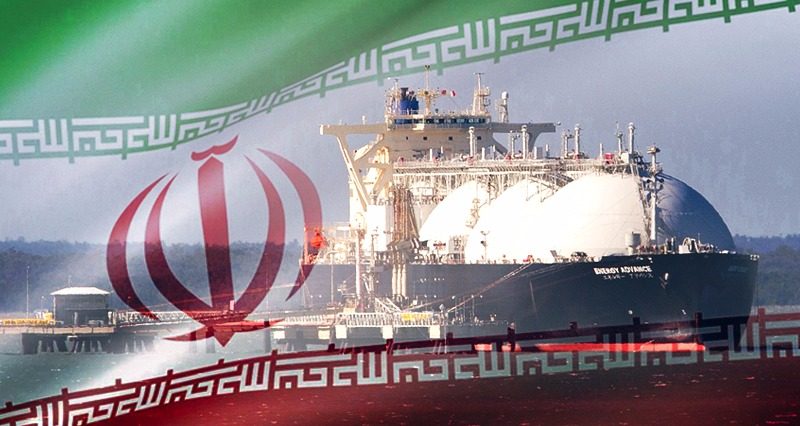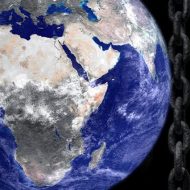Over the past few decades, the share of natural gas in the global fuel basket has grown considerably. All predictions point to gas becoming the largest source of energy in the world, reaching over 28% by 2035. At present, countries such as US, Russia, Australia have made huge investments aiming to take a higher share of the LNG market. Qatar, the world’s largest producer and exporter of natural gas, with a market share of around 30%, has accounted for one third of the world’s total exports in recent years. Considering Qatar’s policies and increasing investment, it is expected that the export capacity of this product will only increase. America is struggling to keep up, and in the light of advanced technology with government-backed innovation projects and financial support, as well as the active participation of the private sector, it is planning to stake its own claim in the global energy market. Unconventional oil and gas production has turned the country from an energy importer to an energy exporter. According to the US Energy Information Administration, the country is set to become the third largest LNG exporter in the world after Qatar and Australia, with a daily production of 9.6 cubic meters a day.
Iran holds huge oil and gas reserves, yet is unable to play a role in Middle Eastern or world natural gas market. Iran annually exports only 10 bcm natural gas to Turkey, and is unable to complete any of the five LNG projects it has drawn up. Since the revolution, sanctions by the US have directly targeted Iran’s energy sector and decreased oil and gas production capacity, meaning that despite possessing the world’s second largest natural gas reserves, Iran now contributes just less than 1% of global natural gas. During the Obama administration, many foreign companies which were active in Iran’s energy sector withdrew from Iran, making it unable to reach its goal to increase natural gas production capacity. Iran planned to build five LNG facilities to produce 70 million ton of LNG annually to enter the LNG market.
Ali Kheyr Andandish, Iranian Managing Director of Natural Gas Liquidation states that if the LNG project can be implemented and produce the projected 80 million tons of gas, Iran will rank fourth among global exporters, but could also reach fifth place with a respectable 20 million tons. Plans have since been scaled back, with the country aiming to reach only seventh or eighth place in the world with a production of 10 million tons. Regarding gas pipeline routes, Iran’s planned pipeline through Iraq to Syria and on to Europe has been welcomed by European countries, and if conditions are favorable, European partners are looking to participate in the development of these plans. Iran’s gas exports to Europe via pipelines and LNG are in progress, allowing for multiple purchase mechanisms.
At present, Iran’s priority is to complete its LNG project with a production capacity of 10 million tons per year. The project is 52% in progress, and $4-6 billion is needed to complete work. So far, negotiations have been ongoing with foreign companies to complete the project, but all have yet to be concluded.
Iran has a number of plans to attract foreign capital and technology to become an LNG exporter. One of Iran’s plans include exporting natural gas to Oman via a planned Iran-Oman natural gas pipeline and using Omani LNG facilities to transit gas further afield. The Iran-Oman natural gas project plans to produce and export around 2 million tons of gas per year.The planned pipeline would connect Iran’s vast gas reserves with Omani consumers as well as with liquefied natural gas (LNG) plants in Oman that could re-export the gas mainly to Asian market. In 2013, the two countries signed an agreement to supply gas to Oman through the new pipeline in a deal valued at $60 billion over 25 years.
Iran’s other plans include producing LNG using Russian technology and capital. In 2017, Gazprom showed interest by signing an agreement with the National Iranian Oil Company (NIOC) to build an LNG gas facility. The joint geopolitical strategies of Russia and Iran have paved the way for the broad cooperation of two companies, especially in the field of oil and gas. This autumn, Gazprom signed a two-year deal with Iran on natural gas liquefaction (LNG) and contributed to the project to build a gas pipeline and transport natural gas from Iran to Pakistan and India. By December 2017, Iranian officials announced a six-month window in which Gazprom was invited to work on the project. However, further action has not been forthcoming and negotiations have so far led nowhere.
After the nuclear agreement was signed, Iran invited foreign companies to invest in the country’s five LNG plans, also asking Chinese energy firms to build small scale LNG facilities. In May 2016, the director of Iran’s national gas export company stated that Chinese companies ought to invest in the construction of CNG units and mini-LNGs in Iran, adding that Iran was ready to supply LNG units. Again, no progress has been made in this regard.
Given developments in the energy market and the probable opposition by the Trump government of Iran’s recent missile tests, attracting foreign capital and technology to the Iranian energy industry, especially the LNG industry, looks harder than ever. Furthermore, due to the saturation of the LNG market, now with the assumption of raising funds, Iran has little chance of active participation in this sector. With the long-term planning, attracting the necessary capital and increasing LNG production with the establishment of new LNGs, it might be possible to have an effective presence on this market. Risk reduction in the country will encourage foreign companies to invest in Iran.
Iran has signed an agreement to produce LNG with Norway’s IFLNG , with natural gas to be provided by the South Pars seventh refinery to ships able to convert natural gas to LNG for transfer to sale in East Asian markets. In February 2018, Iran cancelled this agreement.
Iran’s plans to build small scale of LNG facilities are riddled with issues of their own. There is no guarantee that after the US withdrawal from the JCPOA they will remain interested in the Iran LNG sector, while another problem is the limitation of Chinese NOCs’ tech and capital capacities. To sum up, if Iran is planning to become LNG exporter and plays role in LNG market needs to revise its foreign policy another problem is that to attract foreign investment Iran needs a legal framework, an efficient and fast decision process and political stability (especially in the international context). These variables are far from being achieved as we speak.Iran needs regional diplomacy in the field of energy to maintain regional markets, while the resolution of tensions with its neighbors will have a positive impact on the expansion of Iranian markets.









Leave a Reply